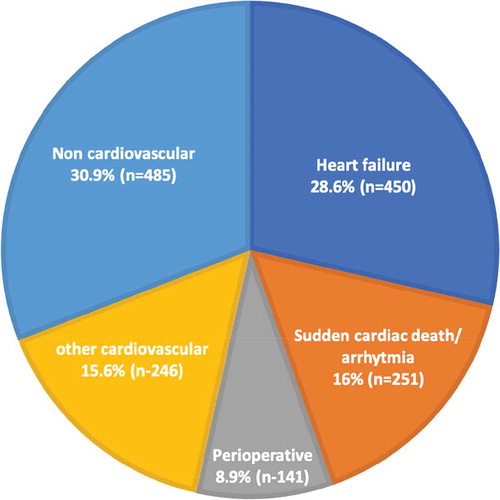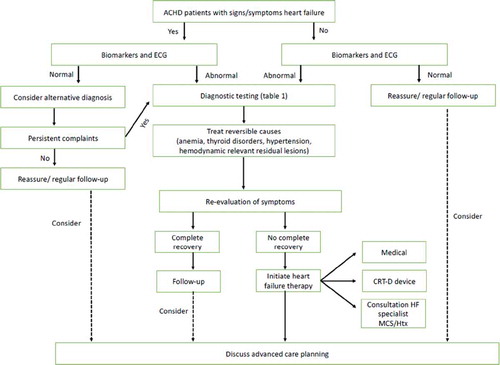Figures & data
Figure 1. Changing prevalence of Congenital Heart Disease (CHD) in the European Union by age group. The rough estimates of the total population of children, adult patients 18–60 and adult patients >60 years with CHD are based on published birth rates (in 2008) and consider only patients born after 1970, ignoring adult mortality. Assumptions are based on currently reported survival into adulthood, reported rates of patients >60 years and records of the German Competence Network for Congenital Heart Disease. ACHD: Adult Congenital Heart Disease. Reproduced with permission [Citation4].
![Figure 1. Changing prevalence of Congenital Heart Disease (CHD) in the European Union by age group. The rough estimates of the total population of children, adult patients 18–60 and adult patients >60 years with CHD are based on published birth rates (in 2008) and consider only patients born after 1970, ignoring adult mortality. Assumptions are based on currently reported survival into adulthood, reported rates of patients >60 years and records of the German Competence Network for Congenital Heart Disease. ACHD: Adult Congenital Heart Disease. Reproduced with permission [Citation4].](/cms/asset/46930efd-1c36-4c41-9f04-1d754a8c3b27/ierk_a_1797488_f0001_oc.jpg)
Figure 2. Mechanism of death in 1573 adult patients with congenital heart disease. See text for references.

Figure 3. Biomarker levels in adults with congenital heart disease according to the type of congenital heart disease. Combined data previously published by Baggen 2017, Baggen 2018, Eindhoven 2015, Geenen 2019 [Citation42,Citation50–Citation51–Citation52].
![Figure 3. Biomarker levels in adults with congenital heart disease according to the type of congenital heart disease. Combined data previously published by Baggen 2017, Baggen 2018, Eindhoven 2015, Geenen 2019 [Citation42,Citation50–Citation51–Citation52].](/cms/asset/9c032a57-55dd-4b24-ac10-7567c2c751da/ierk_a_1797488_f0003_oc.jpg)
Figure 4. Heart-failure free survival according to the number of abnormal biomarker levels in adults with congenital heart disease. Combined data previously published by Baggen 2017, Baggen 2018, Eindhoven 2015, Geenen 2019 [Citation42,Citation50–Citation52].
![Figure 4. Heart-failure free survival according to the number of abnormal biomarker levels in adults with congenital heart disease. Combined data previously published by Baggen 2017, Baggen 2018, Eindhoven 2015, Geenen 2019 [Citation42,Citation50–Citation52].](/cms/asset/269c4c76-239b-4a2c-b0d7-3bd163f7272f/ierk_a_1797488_f0004_oc.jpg)
Figure 5. Proposed diagnostic and treatment algorithm in ACHD patients with signs/symptoms of heart failure.

